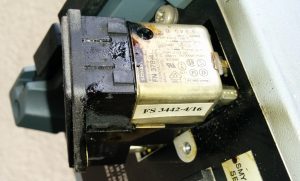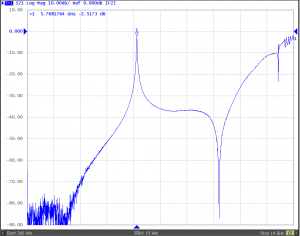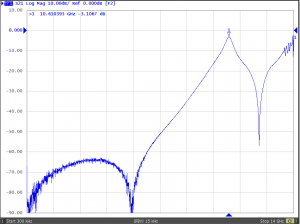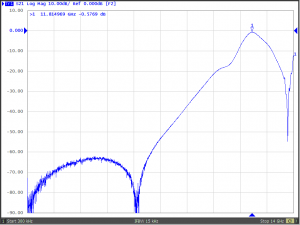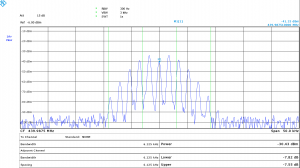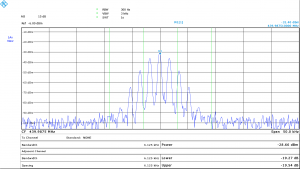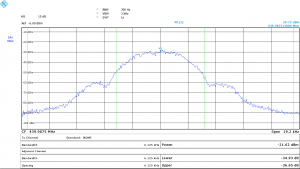Last weekend i had a negative surprise. Some noise from the desk and a lot of fume indicated that some electronic stuff burned.
Investigating the source of the fume i found that the mains filter of my old R&S SMY-02 burned away.
Fortunately i have connected it to a switchable mains distributor which prevented it from burning in my absense.
Monthly Archives: August 2016
6cm Pipecap filter [part 2]
I shortened the probe pins of my experimental pipecap filter to 5mm in order to get rid of the unwanted response around 7GHz. As expected the filter is rather narrow now and the attenuation increases a lot.
Marcel made some new measurements up to 14GHz in order to see how the suppression behaves. It looks a lot better now but you can also see that at the upper end of the measurement range the attenuation is very low (keep in mind that the probes are nice quarter wavelength antennas there).
The following picture shows the filter tuned to the 6cm band:
The passband attenuation is now always somewhere in the range of 2..3dB.
Tuned to the upper end of the possible range you see that it behaves more than a lowpass than a bandpass ;) The passband gets a bit wider.
I would assume that it makes most sense to design the probes beeing quarter lambda for the frequency were the notch of the filter appears (or slightly above). Since this depends on the frequency you want to tune the filter to you need to consider that before you make the filter.
IC-E92 spectrum
Triggered by some forum discussion about interference risk of operating repeaters in neighbor channels in 6.125kHz channels I was curious about the TX spectrum of my IC-E92. The measurement was done radiated. I checked for neighbor channel interference. You can see the delta values bottom right.
FM wide:
FM narrow:
D-Star (only half span screenshot):
You can see that D-Star is really the most narrow band mode. Using neighbor frequencies at close QTH still cannot be suggested but at least the interference will be less than for narrow band FM.

